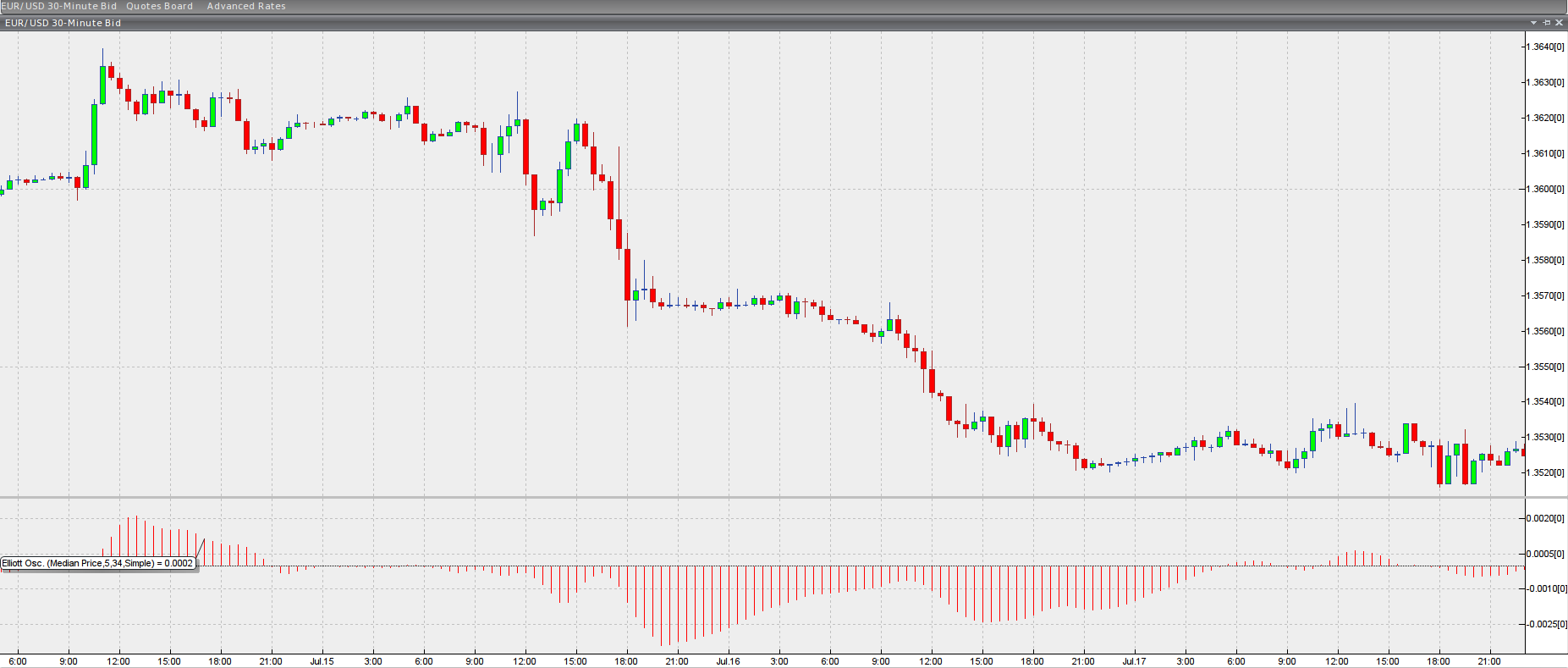Elliott Wave Oscillator
This lesson will cover the following
- Definition
- Interpretation
Developed by Ralph Nelson Elliott, author of the Elliott Wave Theory, the Elliott Wave Oscillator is an indicator used to determine where an Elliott wave ends and another wave begins. It aims to offset one of the Elliott Wave Theorys main weakness – the reliance on accurate wave counting.
The Elliott Oscillator has a robust correlation with Elliott wave patterns and its strongest readings typically show you where the third wave is on the chart. The EWO can be applied on each time frame and will work equally well, if the sample size is large enough.
The Elliott Wave Oscillator, also known as the 5/34 oscillator, is basically a 34-period simple moving average (SMA) subtracted from a 5-period SMA. It is displayed as a histogram split into two – a positive and a negative area. The following screenshots shows its visualization.
Chart source: VT Trader
There are several important concepts related to the EWO.
In general, wave 1 most often starts with a trend reversal. Wave 2, which as we know is a correction to wave 1, usually does not reach a new extreme in the counter-trend direction, (e.g. a swing low in an uptrend), but will retrace a considerable part of wave 1. As you know, wave 4 is the other correctional wave during the with-trend momentum, thus a second major correction in the Elliott Wave Oscillator will most likely be wave 4.
The end of wave 2 is logically followed by the beginning of wave 3. As we said above, the most important aspect of trading using this indicator is remembering that its highest/lowest readings identify a bullish/bearish wave 3 of the swing.
Wave 3 is the point where you should have identified the pattern and must act. Because the EWO does not signal exit points, when you enter with-trend around the beginning of wave 3, you should aim for a profit target of 100% – 161% the length of wave 1.
Wave 4 usually reverses the oscillator and crosses into the opposite area beyond zero (becomes negative during a bull trend and vice versa).
The price typically reaches a new high during wave 5, but it diverges from the oscillator, i.e. in a bull trend the price jumps to a higher high, while the EWO marks a lower high. The opposite scenario is in force for a bear trend. This signals that the pattern is nearing completion and the trend is coming to an end. The upcoming reversal will often be followed by the formation of a new wave 1 in the opposite direction.
If, however, there is no evident divergence, then the suspected wave 5 is probably false and must be regarded as an extended wave 3. In that case, what we thought to have been wave 4 is nothing more than a pullback within the large wave 3. A protracted wave 3 is evidence of a major price movement in the direction of the trend, which is expected to continue for some time to come.
